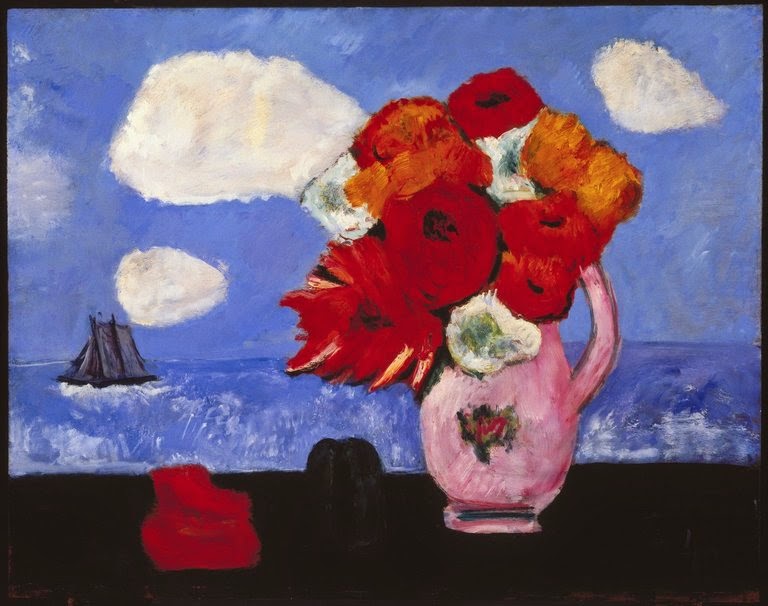It is amazing what can be discovered when one takes full advantage of opportunities. Since I have been exploring the art museums of New England, I have become aware of a wide variety of institutions. On Friday, I drove up 91N less than an hour from my home to explore one of several Springfield museums which I had never visited. I suspect that my first visit with Sue, a high school friend, will not be my last.
 |
I have come to think of Milton Avery as painting women as abstract shapes of color, so I was surprised to see a wonderfully, detailed picture of his daughter. It was a reminder of how artists evolve over time.
 |
|
|
I am sure that Marsden Hartley has also evolved, but the sample of his art in this exhibit seemed to represent the style one generally associates with him. And no one could complain as his bright, primitive style is delightful to observe.
 |
|
Handsome Drinks, 1916
Marsden Hartley (1877-1943) Oil on composition board |
 |
|
Marsden Hartley (American,
1877-1943). Summer Clouds and Flowers,
1942. Oil on fabricated board
|
Erastus Salisbury Field
Historical monument of the American Republic
When entering The Michele & Donald D'Amour Museum you are greeted by broad marble stairs and center atrium. The archictecture of the interior space announces that many treasures will be found within.
At the end of the Blake Court, the visitor spies a very large canvas which simply demands a closer inspection.
Erastus Salisbury Field Historical Monument is a very large (9 feet high x 13 feet wide) is an extraordinary canvas which endeavored to document history of the United States. It was Field's hope that his vision would ultimately be built. He plans to raise the funds by exhibiting the painting and providing lectures on his vision. However, the Field's dream never became a reality. There is a certain frustration in exploring this work of art because it is very difficult to see the details or understand the symbolism that Field used in his masterpiece. Below is a sample of the type of images which are the foundation of this fantastical representation of our history. It was originally published in the article Ideology and Rhetoric in Erastus Salisbury Field's "The Historical Monument of the American Republic" by Paul Staiti published in Winterthur Portfolio, Vol. 27, No. 1 (Spring, 1992), pp. 29-43
At the end of the Blake Court, the visitor spies a very large canvas which simply demands a closer inspection.
 | ||
| Historical Monument of the American Republic, 1867-1888 by Erastus Salisbury Field, oil on canvas |



No comments:
Post a Comment